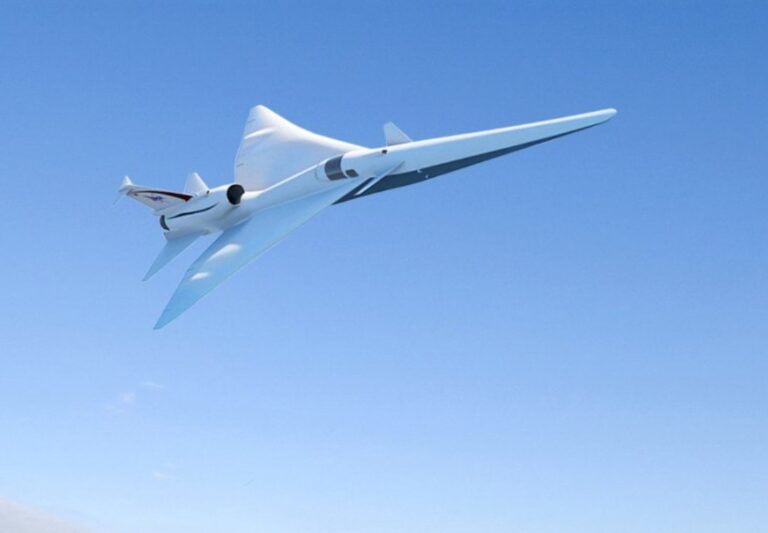A few days ago, NASA and Lockheed Martin unveiled the X-59, a supersonic plane that will hopefully help transform commercial air travel in the near future. This experimental aircraft is in fact at the center of NASA’s Questst mission. Which aims to address restrictions on supersonic flights above ground, to (re)open new perspectives in the aviation sector.
Table of Contents
NASA’s new supersonic plane
The X-59 is designed to fly at 1.4 times the speed of sound (about 1,500 km/h). Thus generating a relatively quiet “sonic boom” thanks to its innovative design.
The noise, here’s the point. The Quesst mission in fact addresses the restrictions in force (in the USA, and in many other countries around the world) on commercial supersonic flights above ground. Thesea re due to the disturbance caused by sonic booms.
This is why Bob Pearce, a NASA executive, underlined on this occasion the enthusiasm of demonstrating the feasibility of silent supersonic travel. Thus opening new horizons for US companies and global travelers.
The dream is to go back to traveling like in the days of Concorde. Which, between the 1970s and the early 2000s connected the two sides of the Atlantic in about three hours.
The X-59’s thin, tapered nose accounts for nearly a third of its length and will “break” shock waves that would normally cause a sonic boom in a supersonic aircraft.
The shape of the new supersonic plane
To obtain this configuration – which involves a length of 30 meters and a wingspan of 9 – the cockpit was positioned almost halfway along the length of the aircraft. And, is not equipped with openings (windows, windscreen, etc.) in the front.
For this reason, pilots will be able to use the eXternal Vision System. This is a vision system based on high-resolution cameras that show their images in real time on a 4K monitor in the cockpit. It will be (almost) like piloting in a simulator, in short.
The needs of the project also determined the position of the engine, mounted in the upper part of the plane and “shaped” in the lower part, to prevent the shock waves from coming together behind the plane and causing a sonic boom.
The X-59, they explain to NASA, although experimental, is not a prototype. Its cutting-edge technologies will drive future generations of supersonic aircraft. The goal is to demonstrate that it is possible to build supersonic aircraft that are silent. Thus capable of flying over inhabited lands and opening up new commercial markets for companies.
New tests for supersonic aviation
With the presentation complete, the Quesst team now prepares for system tests, engine starts and taxiing tests.
The first inaugural flight test is expected by the end of 2024, followed by the first silent supersonic flight. NASA’s Armstrong Flight Research Center in Edwards, California, will be the base of operations for a series of subsequent tests.
If the flight tests are successful, NASA will fly the plane over some cities in the United States to collect data on the noise impact. Data that it will share with agencies that regulate air transport.
Read also: All about Overture Jet, the supersonic plane that will connect London and New York in 3.5 hours












